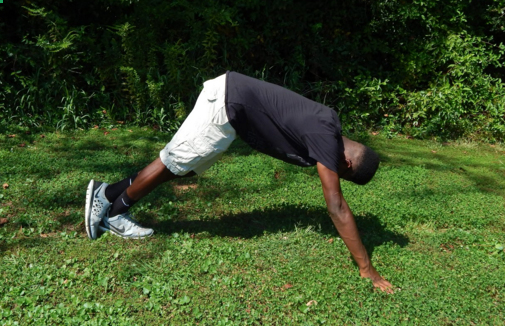Freshman and Georgia middle school state triple jump finalist Neil Chavis does calf stretches to improve his athletic performance. He stretches prior to every jump he does. “You gotta stretch to be the best,” Chavis said. Photos taken by Flora Lechtreck.
By FLORA LECHTRECK – Staff Writer
Studies show that it is very important for your health to stretch your muscles before and after physical activity. There are many beneficial ways to stretch, including active warm-ups and group stretches.
For general fitness, The American College Of Sports Medicine recommends static stretching, preceded by an active warm up. Depending on the sport, doctors recommend different variations in the stretching routine. If the sport requires flexibility, like gymnastics or dance, static stretches are most beneficial. If the sport involves running or jumping, like basketball or track, dynamic stretches are the way to go.
Static stretches that are done in place, and do not usually increase your heart rate, while dynamic stretches are where you actually move while performing the stretch in order to elongate the muscles through movement. In sports which require bursts of energy and power, dynamic stretches improve performance.
“Football and baseball require power, explosiveness and stamina throughout the kinetic chain, requiring a whole body stretching routine. Cross country requires stamina and efficiency,” Johnson said.
1. Arm/Back/Neck Stretches (Static)
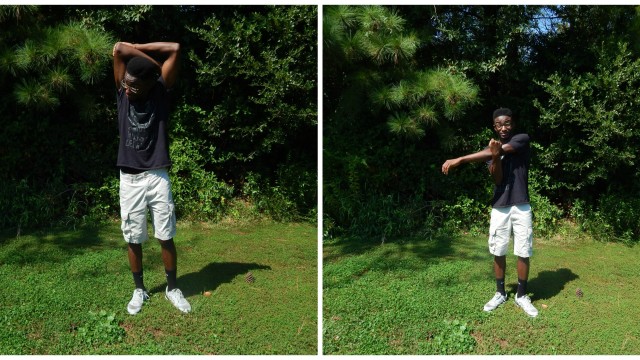 (Above, Right) This is usually one of the first stretches that is used in a group stretch session, because it is a good way to warm-up arms and shoulders. This stretch helps to stretch your triceps, as well as your neck and back. It is important to stretch large muscle groups in order to have a balanced stretch.
(Above, Right) This is usually one of the first stretches that is used in a group stretch session, because it is a good way to warm-up arms and shoulders. This stretch helps to stretch your triceps, as well as your neck and back. It is important to stretch large muscle groups in order to have a balanced stretch.
“Your neck and your shoulders have to balance each other as well, and you want to make sure that these stabilizing muscles are being stretched equally,” Scott said.
2. Glutes/Quads/Back (Static)
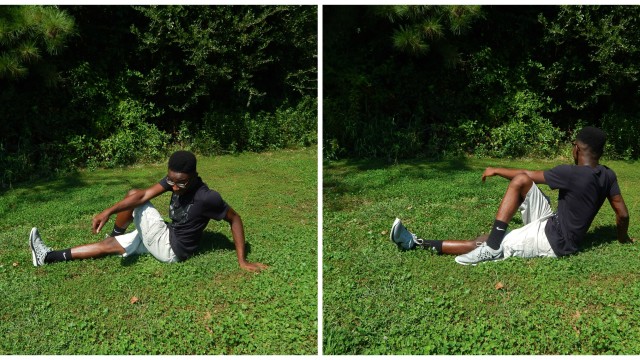 This stretch, known as the seated spinal twist, stretches a group of muscles known as the glutes. The glutes consist of the gluteus maximus, gluteus minimus and gluteus medius. Scott believes it is very important to balance your stretches on both sides when stretching muscle groups.
This stretch, known as the seated spinal twist, stretches a group of muscles known as the glutes. The glutes consist of the gluteus maximus, gluteus minimus and gluteus medius. Scott believes it is very important to balance your stretches on both sides when stretching muscle groups.
“You always want to hit your large muscle groups, and make sure there is also a balance,” Scott said.
3. Quad/Groin stretches (Dynamic)
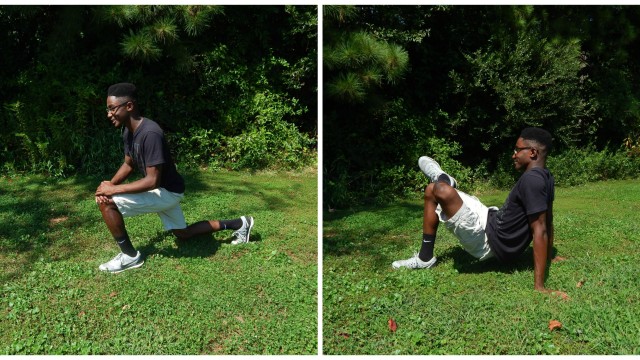 To avoid injury, it is important to stretch your hamstrings and groin muscle to prevent torn or pulled hamstrings. A torn hamstring can be debilitating for an athlete, and requires surgery to repair.
To avoid injury, it is important to stretch your hamstrings and groin muscle to prevent torn or pulled hamstrings. A torn hamstring can be debilitating for an athlete, and requires surgery to repair.
“A pulled hamstrings is a big indicator that you’re not stretching,” Scott said.
4. Hip/Quad (Dynamic)
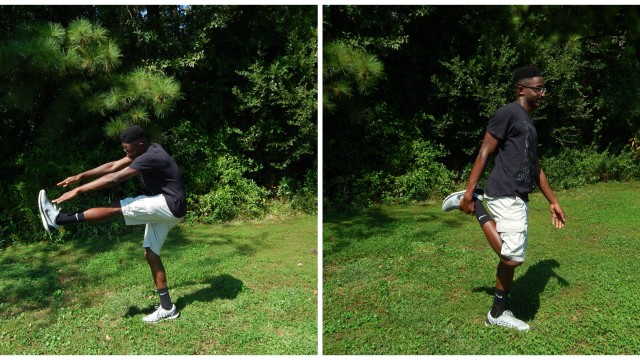 This stretch can be called high jump, or, as many athletes call it, “Frankensteins”. It is often paired with the second stretch, which is called a quad stretch, since it stretches the quadricep muscles. It helps to stretch your abdominal muscles, as well as your glutes. These stretches are an example of dynamic stretching.
This stretch can be called high jump, or, as many athletes call it, “Frankensteins”. It is often paired with the second stretch, which is called a quad stretch, since it stretches the quadricep muscles. It helps to stretch your abdominal muscles, as well as your glutes. These stretches are an example of dynamic stretching.
“I have to do karoakes, buttkicks, and high jumps,” freshman and middle school triple jump finalist Neil Chavis said, “I have to do that every single time before I do a jump.”
5. Back/Quad (Static)
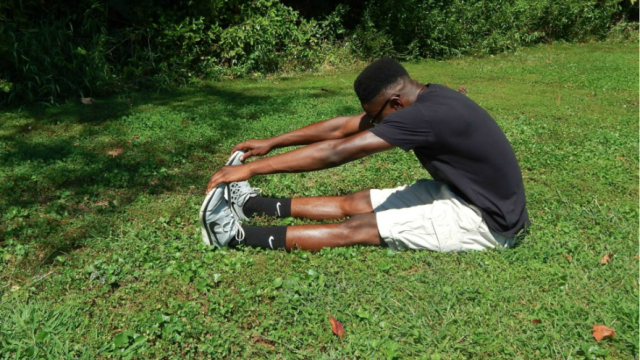 A sitting toe-touch is a stretch that is commonly used before any physical activity that involves your lower extremities. Athletes find that it is very important to slowly ease into this stretch, instead of doing it in rapid jolts, as this could actually cause damage to your muscles.
A sitting toe-touch is a stretch that is commonly used before any physical activity that involves your lower extremities. Athletes find that it is very important to slowly ease into this stretch, instead of doing it in rapid jolts, as this could actually cause damage to your muscles.
“Greater flexibility leads to more power, explosiveness and better overall muscle tone,” Johnson said.
